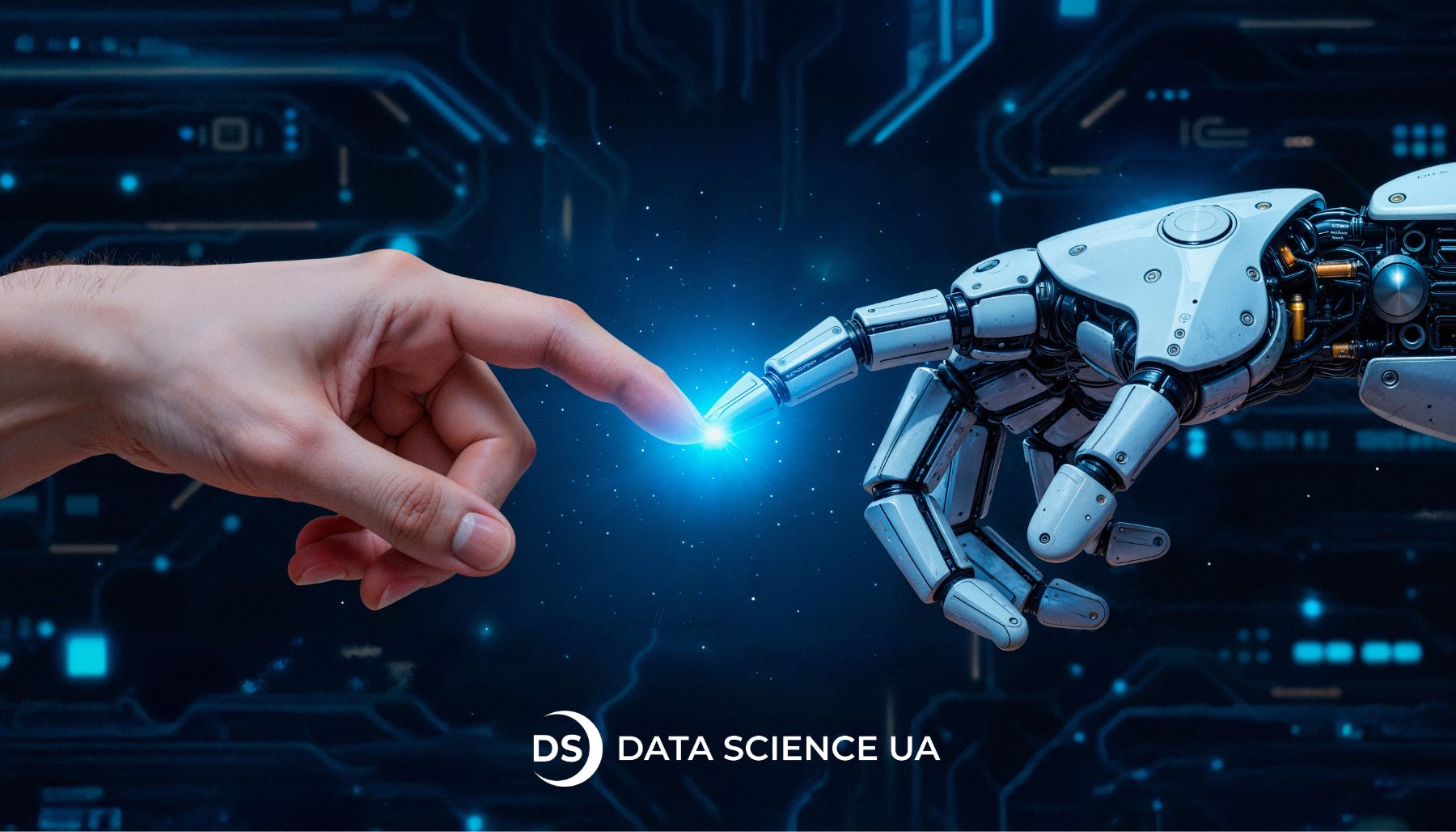The role of artificial intelligence in fraud detection in banking
Banks go digital – fraud becomes even a bigger cause of concern. Although online banking makes financial management much easier for customers, businesses face a growing threat of fraudsters aiming to exploit emerging loopholes. Artificial intelligence fraud detection in banking is proving to be a game-changer in the fight against financial fraud. Let’s find out how AI in banking is changing the industry through real-life examples and analytics.
Combination of AI and ML in fraud detection
AI and ML are necessary technologies for banks that want to fight fraud effectively. AI and ML processes enormous volumes of data at high speed, and they can identify potential fraud before it is actually committed. McKinsey estimates that artificial intelligence fraud detection in banking could decrease fraud losses by as much as 30% by the year 2025, indicating the potential of the technology to transform the banking industry.
Key elements of AI-powered fraud detection system
Predictive analytics
Predictive analytics uses historical data to forecast what will happen in the future. Think of it like this: a customer who usually makes small purchases attempts to withdraw a huge amount of money all of a sudden. Seems concerning? And it is, that’s why the system assesses the gap between the usual transactions and suspicious ones, marking the latter for increased safety. A case in point is Bank of America, which reduced fraud cases by 25% after embracing predictive analytics, showing the efficiency of predictive analytics.
Real-time monitoring
For example, if a customer’s account is accessed from a foreign country soon after a domestic transaction, an AI system promptly alarms both the customer and the responsible staff of suspicious activity. HSBC used real-time monitoring and found that this reduced fraudulent transactions by 40% within six months.
ML algorithms
Machine learning algorithms form the core of AI fraud detection banking systems. Opposed to traditional rule-based systems, capable of identifying only previously recognized patterns, an ML algorithm learns from each new transaction and case, improving on its ability to spot fraudulent activity. For instance, such highly popular models as decision trees and neural networks are usually utilized. Decision trees create a flowchart-style model to make decisions based on data attributes, whereas neural networks mimic the operations of the human mind to recognize intricate patterns. According to McKinsey, companies that utilize sophisticated ML algorithms may witness fraud detection rates increase by 20% by the year 2025. With the use of similar types of algorithms for real-time fraud detection, American Express achieved a 30% decrease in fraudulent activity.
NLP
NLP assists AI in processing human language. NLP may examine emails and messages to detect phishing in fraud detection. PayPal, for instance, applied NLP services to examine email trends and reduced phishing attacks by 50% for a year.
Behavioral biometrics
Behavioral biometrics monitor how users use their devices, including typing speeds and mouse use. Fifth Third Bank achieved a 15% reduction in identity theft once it incorporated behavioral biometrics as part of fraud detection.
Risk scoring
Risk scoring assigns each transaction a level of risk based on a variety of factors such as transaction size, location, and frequency. This allows banks to focus on their investigations based on priority. By using risk scoring, Wells Fargo automated fraud detection and increased efficiency by 20%.
Case studies
Bank of America
Bank of America utilized predictive analytics to enable enhanced fraud detection. The bank was able to reduce fraud cases by 25% in the first year of implementation through its use of customer behavior and transaction patterns analysis. The ability of the system to pick up anomalies quickly and accurately was the reason behind this success.
HSBC
HSBC employed real-time monitoring systems, which allowed them to track transactions in real time. It cut fraudulent transactions by 40% within six months, proving the effectiveness of analyzing real-time data to prevent fraud.
American Express
American Express applied machine learning in finance techniques to detect fraud. As a result, the firm recorded a 30% decrease in fraudulent cases, highlighting how big data analysis can bring tremendous change to detecting fraud.

A hacker tries to break into the system, but receives the message “Access Denied” — an illustration for articles about cybersecurity, data protection, and multi-level authentication
Benefits of AI in fraud detection
Faster response times
AI in banking fraud detection systems detect fraud better than traditional ones. For instance, CitiBank reduced its average fraud response time from several days to just minutes after it introduced AI-based solutions. This quick response is critical to minimize losses and preserve the customer base.
Improved accuracy and efficiency
AI improves the accuracy of fraud detection, leading to fewer false positives. For example, Barclays cut their false positive rate from 15% to less than 5% after they implemented AI, allowing legitimate transactions to proceed easily and enhancing customer experience.
Reduced operational costs
Automation of fraud detection can lead to significant cost benefits. JP Morgan Chase saw 30% reduction in the operating cost of managing fraud once they transitioned to AI-based technologies. This is an efficiency that allows banks to utilize resources better.
Enhanced customer experience
A robust fraud prevention system increases customer confidence. For example, Capital One prioritized AI fraud detection and saw a dramatic increase in customer satisfaction ratings, with 85% of customers reporting they felt secure in their transactions.
Types of bank fraud addressed by AI
Combating phishing attacks
AI assists in detecting phishing emails that are targeting personal data. Through the analysis of patterns and email content, AI can mark emails as suspicious. Bank of America cut successful phishing attacks by 50% through the use of AI in scanning email traffic.
Credit card fraud detection
AI keeps track of usage patterns to check for suspicious expenditures. For instance, if someone is used to making local expenditures but suddenly tries to make an enormous international payment,the system automatically marks such transaction as suspicious. This way, Visa claimed a drop of 30% in unauthorized transactions through the use of AI-based monitoring.
Document forgery detection
AI can differentiate between genuine and fake documents. For instance, it cross-verifies signatures and personal information to authenticate identities with accuracy. Citibank used AI for document verification and recorded a decrease of 25% in fake applications.
Challenges and concerns in AI fraud detection
Data security and protection concerns
As institutions collect and process customer information, privacy must be ensured. Compliance with acts such as GDPR is extremely crucial to preserve customer trust. Equifax, for example, was heavily questioned when there was a data breach in their database, establishing the requirement of proper protection of information.
Merging the current banking infrastructure with AI
The integration of the AI technology with the current systems can be challenging. Lloyds Banking Group initially experienced integration challenges, which hindered the payoff from their investments in AI. Strategic planning and investment in new infrastructure result in effective integration.
False positives and false negatives in fraud detection
Though AI based fraud detection in banking may lower the number of false positives, it is not foolproof. Both sensitivity and specificity need to be balanced. Research discovered that banks frequently have a trade-off between detecting fraud and keeping customers happy. For example, Chase had to update its algorithms to prevent disruption for trusted customers.
Regulatory compliance
Banks must operate within a strict regulatory framework in the use of AI. Compliance is essential to prevent sanctions. For example, Deutsche Bank was in the regulators’ spotlight when it did not meet standards, confirming the necessity to keep up.
Compliance with new fraud methods
Spammers are also evolving their tactics, and thus, AI systems must be capable of evolving fast. Algorithmic updates and training models on new data regularly will keep banks ahead of the game when it comes to emerging dangers. Santander Bank invests in continuous training of its AI systems in trying to stay in sync with shifting fraud patterns.
The future of AI in fraud prevention
McKinsey predicts that by 2030, fraud detection using AI in banking can cut fraud losses by up to 30%. Emerging technologies like blockchain and sophisticated biometric systems can revolutionize fraud detection even more. With AI technologies continuing to grow, banks will have even more sophisticated tools at their disposal to combat fraud, which will make the financial landscape even safer.
Impact on customers
Fraud detection using AI in banking improves accuracy, so that customers can be more certain of their financial transactions. This added security builds trust, reducing the worry that accompanies potential fraud. For instance, banks that have successfully implemented AI solutions experience higher level of customer satisfaction and loyalty, with clients appreciating the effort put into protecting their accounts.
Ethics and accountability
While AI has numerous benefits, there are some ethical concerns as well. Among the most common ones are data privacy and algorithmic biases. Banks need to ensure that their AI systems are rule-compliant and protect customers’ data. Being transparent about how AI arrives at decisions can create more customer trust. For example, banks can explain how the AI algorithms are built and how they maintain non-biasedness in order to treat their customers uniformly.
Contact us to know more about how we can assist you!
Prevent banking fraud with Data Science UA’s expertise
Banking fraud is increasingly sophisticated, and traditional security controls alone cannot keep up. AI and data science offer a game-changing solution to catching and halting fraudulent activity in real-time – something static rules-based systems can’t do.
But too many businesses don’t know where to begin. What are the benefits? How do you do it safely? That lack of certainty makes businesses hesitate – and lose opportunities.
At Data Science UA, we help banks and fintech companies bridge this gap. We have over 9 years of experience and a team comprising PhDs, data scientists, and AI engineers specializing in bespoke AI solutions that can spot patterns of fraud, reduce false positives, and secure both the users and the institutions.
We don‘t just provide technology – we guide you through the entire process, from auditing your current systems to deploying AI models in a risk-free and ethical way. Our solution ensures regulatory compliance, scalability, and true business value.
If you want to future-proof your banking operations, our AI development company can help you get it right. Let us talk about how we can take advantage of introducing you to cutting-edge fraud detection.
Is AI the #1 solution for banking?
With mass digitalization and the rise of online banking, the fraud issue has become a matter of utmost urgency. AI and ML are not just trendy terms but necessary tools that are transforming the manner in which banks fight financial crime. With progressive technologies such as predictive analytics, real-time monitoring, and behavioral biometrics, banks can greatly improve the likelihood of uncovering fraud.
Real-life examples from banks like Bank of America, HSBC, and American Express are a testament to the success of these AI-driven solutions. With the capability to identify suspicious behavior in seconds and reduce false positives, these technologies not only protect financial institutions but also optimize customer trust and satisfaction.
In the future, AI-driven fraud detection holds a lot of potential. It is crucial, however, that data privacy, regulatory needs, and ongoing updating to stay current with evolving fraud schemes are addressed.
Lastly, by embracing AI and ML, banks can create a secure and effective banking system, safeguarding their business as well as clients. The journey to fraud-free existence continues, and with proper techniques and tools, a safer financial universe is at hand.
FAQ
How artificial intelligence enhances fraud detection in banking?
AI enhances fraud detection by conducting real-time analysis of massive amounts of transactional data to identify patterns suggestive of fraud.
What kinds of banking fraud can be well detected and prevented by AI?
AI can detect a range of fraud, like identity theft, phishing scams, credit card fraud, and document forgery, using behavior and transaction monitoring.
What are problems with using AI to detect fraud in banks?
Among the most prominent issues are: keeping data confidential, interfacing with existing legacy systems, coping with false positives and false negatives, meeting regulatory demands, and staying ahead of emerging fraud techniques.






